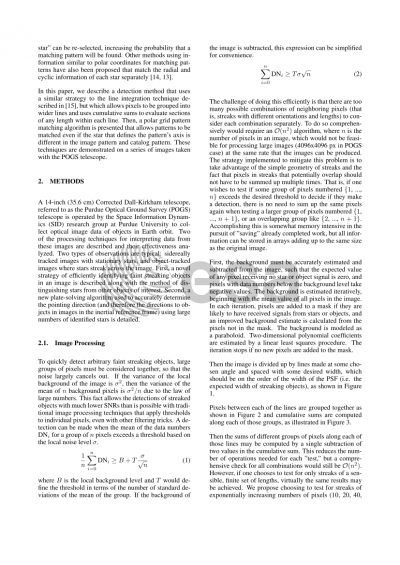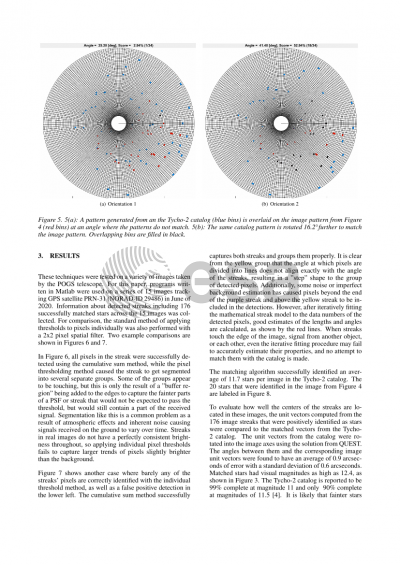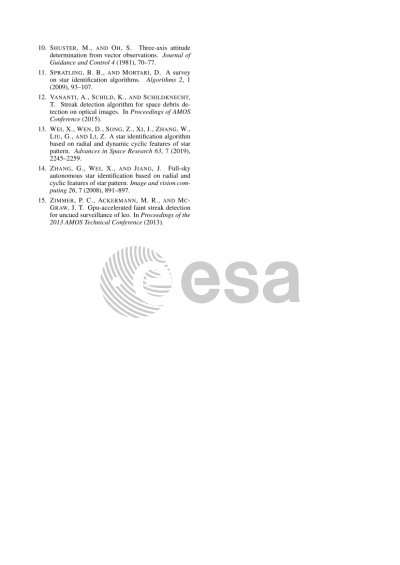Document details

Abstract
A 14-inch (35.6 cm) Corrected Dall-Kirkham telescope, referred to as the Purdue Optical Ground Survey (POGS) telescope is operated by the Space Information Dynamics (SID) research group at Purdue University to collect optical image data of objects in Earth orbit. In order to extract data from images, a novel image processing method has been employed. The method is superior in detecting disintegrated and fainter stars, significantly improving the astrometry solution. First, the novel strategy of identifying faint streaking objects is described. Second, an improved plate-solving algorithm used to accurately determine the pointing direction (and therefore the directions to imaged objects in the inertial reference frame) using large numbers of identified stars is detailed.
To quickly detect arbitrary faint streaking objects, groups of pixels must be considered together, such that the noise over all pixels containing an object roughly cancels out and the total object signal is summed up to easily distinguish the object from background. The challenge of doing this efficiently is that there are too many possible combinations of neighboring pixels (that is, streaks with different orientations and lengths) to consider each combination separately. To do so comprehensively would require an O(n^2) algorithm, where n is the number of pixels in an image. The strategy implemented to mitigate this problem takes advantage of the simple geometry of streaks and the fact that overlapping groups of pixels should not have to be summed up multiple times.
First, as in any image processing, an accurate estimate of the background must be made. The background value may differ across an image due to effects like vignetting. Then the image is divided up by lines made at some chosen angle and spaced with some desired width, which should be on the order of the width of the point spread function (i.e. the expected width of streaking objects). Pixels between each of the lines are grouped together and cumulative sums are computed along each of those groups of pixels. Then the sums of different groups of pixels along each of those lines may be computed by a single subtraction of two values in the cumulative sum. If one chooses to test for only streaks of a sensible, finite set of lengths, the search for detectable objects in an image may essentially be reduced to O(nlogn) while maintaining nearly optimal sensitivity to detect streaks near the selected threshold T. We propose choosing to test for streaks of exponentially increasing numbers of pixels (10, 20, 40, 80, 160, 320, etc.).
Streaked stars with visual magnitudes as high as 13 have been identified in images from the POGS telescope, meaning hundreds of stars can be found in a single image. We seek to maximize the number of stars used for determining the pointing direction of the telescope since the pointing error is expected to decrease as the number of vectors used in plate-solving increases. Matchable patterns are generated by dividing the area around a bright star in an image into a polar grid and "filling" in the grid where stars are found. Patterns in polar coordinates can be convolved with each other and matched with any orientation. Using this pattern matching method has proven to be very robust, as it is forgiving of false positive and negative detections. Image star vectors and catalog star vectors that have been successfully matched are passed as inputs to Shuster's popular QUEST algorithm to determine the orientation.
Preview










